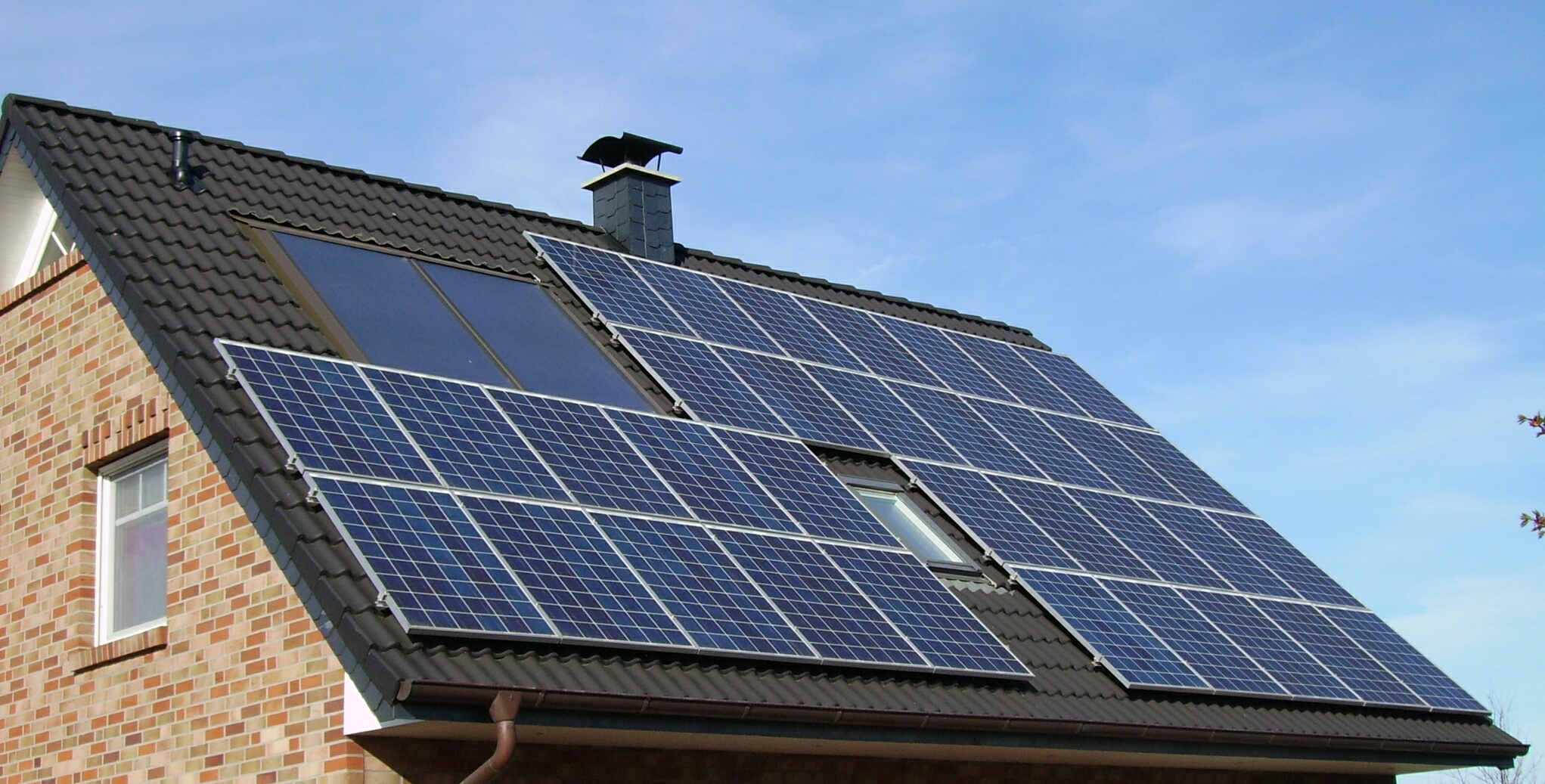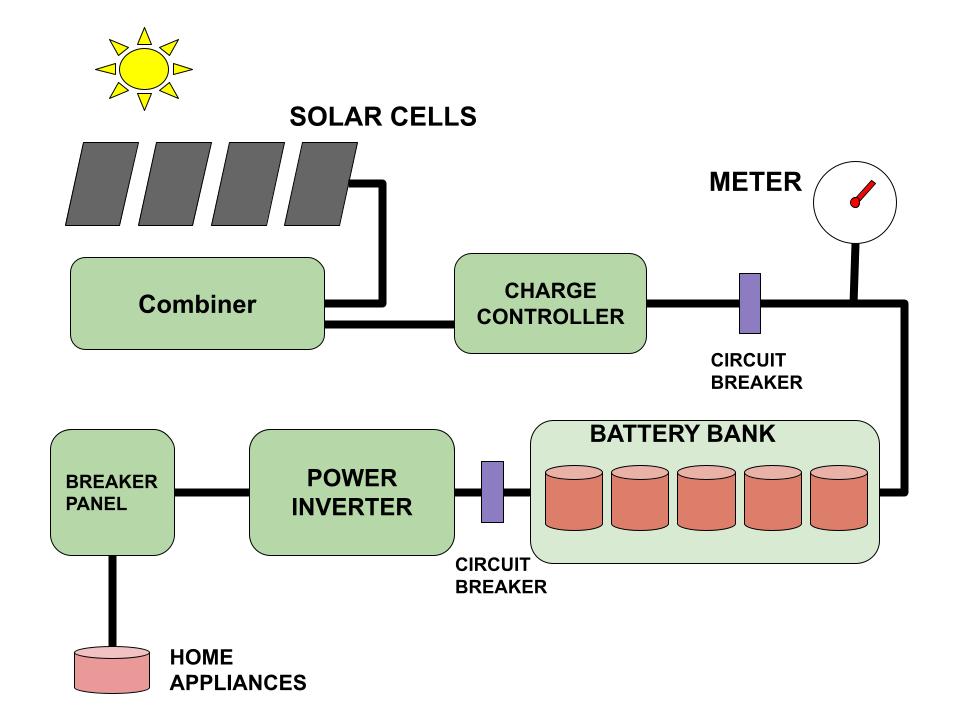

The solar industry has continued to grow over the past decade, and has provided value to its users by allowing them to enjoy tailor made systems and solutions. There are different companies which offer systems with different configurations, pricing, quality, and budget.
In most remote locations, the choices of power are off-grid or hybrid solar systems. Each has its advantages and disadvantages and will vary in cost. Off-grid solar systems mean that all of the needs of a home are met from the power generated by the sun where a hybrid system is a combination of grid power and local solar cells that are generating power in addition to the power received from the grid.

By
Pujanak - Own work, Public Domain,
https://commons.wikimedia.org/w/index.php?curid=3104490
Off-Grid Solar Installations
Off-grid solar power systems are installed in locations which need more robust and reliable supply of electricity. In remote scenarios, standalone systems are needed that are not dependent on the main grid. Off-grid systems are self-sufficient in the sense that they produce, store and distribute their own electricity.
Off-grid solar installations are isolated from all external power sources, which means that they need more infrastructure and devices to function smoothly. As a result, they are generally considered to be the costliest type of installation, largely owing to the fact that they need much more infrastructure in shape of charge controllers, batteries, and protection gear. Think of it as a stand-alone system which generates, regulates, distributes and stores its own electricity. Therefore, it needs almost all electronic devices like inverter, solar panel, circuit breakers, charge controller, batteries, automatic power switch etc.
Checklist for Off-Grid Installations

Solar Installation Sizing
One of the first things that you need to ask yourself is:
1.
Current usage - How often do you use the electricity? A good
rule of thumb is to plan 10% over what you estimate as your
current usage.
2.
Current load - What devices will be pulling electricity from the
circuit. A good worksheet to figure out the load can be found in
this
PDF.
Battery Sizing
Once
you determine the usage and load, you must decide how long that
you would like to be able to run the load without generating
power. Most solar batteries are Absorbant Glass Mat (AGM) so
they are low maintenance and cheaper than lithium batteries.
The
method to determine the size of your battery can be found by
taking the watts-hour per day and multiplying by the number of
days the battery needs to supply power. This will be 50% of the
total charge of your battery so multiply the number by 2.
Required Power Formula: (Battery watts-hour / day) x 2 = Energy required from batteries
To
get the total current-hours required, you will need to divide
the energy required from the batteries by the voltage of the
system:
Required Current Hours: (Energy required from batteries) / System Voltage = Current-Hours (AH)
Last
Divide the Current-Hours By your battery ratings to get the
number of batteries required.
Number
Of Batteries: (Required Current Hours) / Individual Battery
Rating (AH) = Number of batteries
Controller Sizing
The size of the controller is fairly straight-forward. The formula to size a controller is simply the power produced by the solar array divided by the system voltage.
Controller
Amp Rating: (Power produced by the solar cells) / System
voltage
Wire
Sizing
To determine the size of wire required for your solar system, you will first need to calculate the max current.
Current (Amps) = Power (Watts) / Voltage (Volts)
Once you determine the amps
in your solar system, you can look up any of the online wire gauge
calculators that considers current, temperature, length of wire,
type of wire, and acceptable voltage drop.
We
used this calculator.
Costs
Here's
an example of several varieties of solar systems.
| Brand | Power | Battery | Approximate
Price |
Uses |
| Hiluckey | 5W | 92.5 Wh lithium polymer | 47$ | Device/Phone charging |
| WindyNation | 400W | 3.6 kWh lead acid | $1690 | RVs/Camper |
| AltE | 1.83 kW | 13 kWh lead acid | $12046 | Cabin/Tiny Home |
| AltE | 4.88 kW | 25.9 kW 48V lead acid | $15160 | Small Home |
| Wholesale Solar | 11.34 kW | 55.2 kWh 48V lead acid | $35576 | Mid-Size Home |
Based
on sizing and need, the price range of solar systems will vary
greatly. Proper planning and sizing is the key to installing a
successful installation. Professional installers should be used
for inexperienced users since solar systems can expose the users
to electrical dangers. Always take precautions and make sure
that the system is correctly grounded during installation.
Do
you need some land to install your new off-grid new solar
system? Check out our new
properties.